2012 Environmental Merit Award Recipients
- Welcome
- Lifetime Achievement
- Individual
- Environmental, Community, Academia, & Nonprofit
- Governmental
- Business, Industry, Trade or Professional
- President's Environmental Youth Award (PEYA)
- Energy Star
- Special Thanks
Welcome
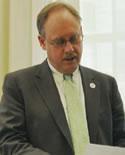
Welcome to the 2012 Environmental Merit Awards Ceremony
Congratulations to all of our 2012 Environmental Merit Award Recipients. These awards are close to my heart because they acknowledge the importance of environmental stewardship. As stewards, all of you are making real and lasting differences in communities across our beautiful region.
This past year EPA New England has worked hard fine-tuning our approaches to recognize the unique capabilities, challenges and resources in New England. Our work shows that New Englanders do not need to choose between a healthy environment and a healthy economy. We are weaving together a high quality of life by restoring and protecting our natural resources while making our land, air and waster healthier.
Today's honorees are huge contributors to our shared environmental successes. Your work is something the staff at EPA New England is very proud of and we all thank you for taking initiative in so many different areas. Whether you're finding innovative ways to safeguard our water resources or conserving the energy our communities use each day, each of you has advanced our mission to protect human health and the environment. And as we see from the breadth of generations covered by the 2012 recipients, the spirit of environmental stewardship is limitless.
Congratulations to all of today's Environmental Merit Award winners.
Sincerely,
Curt Spalding
Regional Administrator, EPA New England
Lifetime Achievement

Alan Buzzetti
For decades, Alan Buzzetti served as the heart and mind guiding Connecticut's various efforts to eliminate lead poisoning, especially among children. In positions at the state Department of Public Health, rising from sanitarian to supervising environmental analyst, Alan managed and directed the state's childhood lead poisoning prevention programs. But titles cannot explain the depth of his commitment to preventing lead poisoning. Alan has a rare ability to see the big programmatic picture as well as the details that make programs work. Alan oversaw Connecticut's lead-poisoning-prevention funding by the EPA and the Centers for Disease Control and Prevention. He was instrumental in seeing that Connecticut became an authorized state for administering lead licensure and certification. This, in turn, allowed the state Department of Public Health to establish the Lead Environmental Management Unit, which eventually became the Childhood Lead Poisoning Prevention and Control Program under his tenure. Alan led the development of the state's Strategic Plan to Eliminate Lead Poisoning and crafted state lead poisoning regulations, including regulations to require annual lead screenings for young children. Years before EPA and HUD offered courses in lead-safe work practices, he worked with the University of Connecticut to create this kind of course for his state, training thousands of workers. Alan also ensured that Connecticut became the institutional home of the EPA-funded New England Lead Coordinating Committee, a regional consortium of agencies working to eliminate lead poisoning. During his tenure, the committee launched its "Don't Spread Lead" campaign for do-it-yourselfers including practices that have been adopted nationwide. Alan retired in 2009 but could not keep away from his life's work. In 2010 he joined the Lead Action for Medicaid Primary Prevention Project, a federally funded healthy homes project. Alan's dedication has truly made a difference to those trying to reduce lead poisoning.
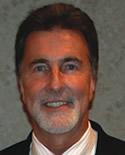
Richard J. Chalpin
Dick Chalpin's 43-year career in environmental protection at the Massachusetts Department of Environmental Protection is distinguished not only by historical achievements but also by the foundations he laid for the future. Dick began his service with the state in the late 1960s, sampling shellfish resource areas. He then worked in a variety of agency programs, gaining technical expertise and a broad perspective on environmental protection. In the late 1970s, Dick became the state's lead investigator and coordinator in a new area of environmental concern: hazardous waste sites. He worked on individual sites and formulated a framework for all sites. One of his first cases involved the discovery of abandoned drums of chemicals in the watershed of drinking water wells in Woburn, a hazardous waste site that would become one of the most publicized and studied in the country. He continued in this area until the early 1990s when he was again asked to lead the agency's effort to develop new approaches to addressing hazardous waste sites in the face of evolving technical and public policy developments, budgetary constraints, and regulatory gridlock. In less than 18 months, he delivered a set of regulations titled the Massachusetts Contingency Plan. This plan was hailed as the nation's first "privatized" site cleanup program. It increased exponentially the rate of cleanup in Massachusetts and was the embodiment of new ideas and regulatory innovations. As northeast regional director for DEP, Dick was responsible for putting in place all regulatory programs and supervising 150 scientists, engineers and attorneys. His vision, creativity and interpersonal skills allowed him to find solutions to the problems and environmental issues of an urbanized, coastal region of 3 million people.
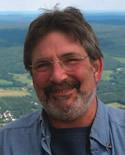
James C. Colman
In 34 years of service to the state, Jim Colman developed programs that made the state a national leader in environmental protection. Jim began his environmental career in the early 1970s as a wetlands protection advocate with the Massachusetts Audubon Society. In 1977, he moved to the Mass. Department of Environmental Protection where he was director of the Division of Wetlands. There he wrote the state's first coastal and inland wetlands protection regulations, which discouraged filling wetlands and addressed thorny policy issues that had often led to bitter struggles between environmental protection and economic development interests. In 1979, Jim was named deputy director of DEP's new Division of Hazardous Waste, where he recruited and trained the staff who built the state's Hazardous Waste Program. When the state Superfund Law was passed in 1983, Jim made sure DEP could respond to releases of oil and hazardous materials. He oversaw development of the first Massachusetts Contingency Plan and led the effort to recruit staff needed to follow a 1987 ballot initiative that set deadlines and standards for identifying, assessing, and cleaning up hazardous waste sites. In 1989, Jim became assistant commissioner for the newly formed Bureau of Waste Site Cleanup and a year later, as resources for addressing spills were dwindling and the economic development community was chafing about perceived government obstacles to building and expansion, Jim led the way to a "first in the nation" privatized approach to addressing waste sites. Jim's ability to synthesize new ideas and his leadership were critical to its success. Many of his pioneering ideas have been adopted by other states at a time when there are limited government resources. In 1998, Jim turned his attention to the Bureau of Waste Prevention. Through Jim's vision and leadership, staff became more capable of working across their primary areas of expertise, leading to more efficient and effective delivery of environmental protection services. Jim has embodied what we wish of all our officials: that they operate honestly, with an open mind, and a high regard for the public's good.
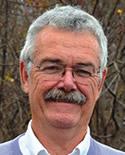
Jeff Emery
During Jeff's tenure with the Maine Department of Environmental Protection, he was known for his professionalism as an environmental scientist and as a leader in such collaborations as those with such national and regional organizations as EPA, Northeast States for Coordinated Air Use Management, the National Park Service as well as other jurisdictions that include Canadian Provinces, Maine Indian Tribes and other states. In his many years of service, Jeff fostered strong positive relationships that improved coordination and information exchange across monitoring networks, enabling the department to identify more accurately air quality issues and improve air quality for Maine's citizens. Air Bureau managers have expressed great appreciation for Jeff's initiative in the development and continuous modernization of the state's air monitoring network. The environmental specialists he has led also have expressed an appreciation for his experience, knowledge, hard work and willingness to pitch in whenever there was a need. Jeff was known in particular for his skill in initiating quick action and innovation to solve monitoring equipment problems with minimum monitor downtime and loss of data.
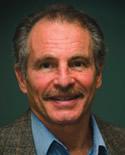
Paul Epstein, M.D.
(posthumous)
Dr. Paul Epstein taught medicine and did research in Africa, Asia and Latin America. In 1993, he coordinated an eight-part series on Health and Climate Change for the British medical journal Lancet. He also worked to assess the health impacts of climate change and develop health applications of climate forecasting and remote sensing in collaboration with the Intergovernmental Panel on Climate Change, the National Academy of Sciences, the National Oceanic and Atmospheric Administration and the National Aeronautics and Space Administration. He was the associate director of the Center for Health and the Global Environment from 1996-2011. Dr. Epstein served as a reviewer for the Health chapter of the Millennium Ecosystem Assessment and coordinated Climate Change Futures: Health, Ecological and Economic Dimensions, an international project with Swiss Re and the United Nations Development Programme, assessing the new risks and opportunities presented by a changing climate. He prepared the report Healthy Solutions for the Low Carbon Economy: Guidelines for Investors, Insurers and Policy Makers that examines the "stabilization wedges" through the lens of health and ecological safety. In addition to this, he coordinated two Cat Modeling Forums with A.I.G., Lloyd's of London and other insurers and insurance brokers to facilitate the integration of dynamic and statistical models for better risk assessment and reduction. For this, he received recognition for his contributions to the work of the Intergovernmental Panel on Climate Change, which shared the 2007 Nobel Peace Prize with former Vice President Al Gore. Dr. Epstein died on November 13, 2011 after a long career of raising consciousness about the health consequences of climate change. His participation in innumerable panels, media events, reports and other popular and scientific venues raising awareness of this issue was invaluable and we are grateful for his dedication.
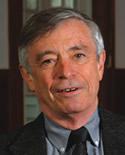
Kenneth R. Geiser, Ph.D.
Dr. Kenneth Geiser, a professor at the University of Massachusetts in Lowell, has been able to span all segments of society to have an indelible impact on the environment. Ken is one of the authors of the Massachusetts Toxics Use Reduction Act and served as director of the Massachusetts Toxics Use Reduction Institute from its founding in 1990 to 2003. His research and writing focus on preventing pollution, cleaner production, toxic chemicals management, international chemicals policy, safer technologies, and green chemistry. A professor of the work environment and director of the Lowell Center for Sustainable Production, Dr. Geiser is a recognized expert on environmental and occupational health policy, having served on various advisory committees for EPA, and the United Nations Environment Program. UMASS Lowell recognized him with the highest honor a professor can have - University Professor. A world-class scientist, he has published dozens of significant papers in the field of sustainability and green chemistry. And perhaps most importantly, he has been a champion of chemicals policy reform in the U.S. and abroad. Dr. Geiser is asked to speak regularly and recently gave a keynote address to the Maine Organic Farmers and Gardeners Association. Several years ago he was asked to participate in the Intergovernmental Forum on Chemical Safety: Global Partnerships for Chemical Safety. Ken has changed the lives of countless people around the world. A humble unassuming person, Ken tries to "shine the light" on others around him. Today, we recognize Ken himself, who has truly dedicated his life to the betterment of the environment in New England and worldwide.
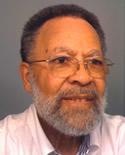
Matthew E. Goode
Born in Boston 82 years ago, Matthew E. Goode spent many of his early years on his uncle's farm in Bellville, Virginia, where the fire in his heart for the environment was ignited. Since then Matthew has served the environment of Boston throughout the decades, showing a particular love for Franklin Park. He became coordinator of a grant to devise a comprehensive plan to manage the 490-acre park, which is owned by five different state and municipal entities. The grant also funded the Elma Lewis Playhouse in the Park, which organized nightly summer performances. Subsequently, Matthew became first chair of the Franklin Park Coalition, which reclaimed the park for many of the uses which Olmsted originally intended. Matthew later was appointed assistant to state Secretary of Environmental Affairs Evelyn Murphy, a position that allowed him to gain support for developing the first natural habitat exhibit in the Franklin Park Zoo, the Tropical Forest. Matthew also worked as a speech pathologist at the John P. Holland Elementary School, where he chaired the Boston Public Schools' first school yard initiative grants, which led to planting edible fruit trees and redesigning the school yard for educational and recreational purposes. The project involved students, teachers, parents and neighbors and led to three new courses based on the newly construed schoolyard. In 1989, Matthew became the supervisor of the Suffolk County Conservation District and is now administrator and treasurer. The conservation district is a local government entity charged with conservation of all natural resources. One of the major achievements for the district was an air quality-monitoring grant in Roxbury's Dudley Square, completed in 2001. This installation of a monitor is now managed by the Massachusetts Department of Environmental Protection and produces daily forecasts of air quality in Boston. Throughout the years, Matthew has served the city's environment and public health.
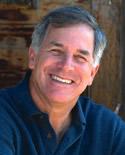
Gary Hirshberg
Gary Hirshberg, president and chief executive officer of Stonyfield Farm yogurt, oversaw the growth of this company in Londonderry, New Hampshire, from a seven-cow organic farming school in 1983 to the world's leading organic yogurt producer with $260 million in annual sales. In doing this he followed a lifelong interest in protecting the environment and a deeply held belief that businesses are central to this mission. Stonyfield used innovative marketing techniques that blended the company's social, environmental, and financial missions. Gary joined Stonyfield Farm a few months after its start in 1983. Initially he directed the small organic farming school from which Stonyfield was spawned. In 1983, the institute was struggling to stay afloat, and began selling organic yogurt as a way to raise revenue. In 2001, Stonyfield Farm entered into a partnership with Groupe Danone, parent company of Dannon. In 2005, Gary was named Managing Director of Stonyfield Europe, a joint venture between the two firms. Stonyfield's profits for the Planet program donates 10 percent of the company's profits to environmental organizations. The company is also involved in a program to install healthy snack-food vending machines in schools. Before going into the yogurt business, Gary was executive director of The New Alchemy Institute – a research and education center on Cape Cod dedicated to organic farming, aquaculture and renewable energy. A New Hampshire native, Gary was one of the first graduates of Hampshire College in Amherst, Mass. He has received six honorary doctorates and numerous awards for corporate and environmental leadership. He is chairman and co-founder of O'Naturals, a chain of natural fast food restaurants. The father of three children, Gary also is president of the Express Soccer Club and coaches a girls' under-15 premier travel soccer team. To this day, Stonyfield Farm stands by its original principles: to make a healthy product and earn a profit without harming the environment. "Business is the most powerful force in the world," Gary once told a journalist. "I believe that virtually every problem in the world exists because business hasn't made finding a solution a priority."
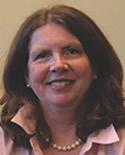
Nancy L. Langrall
Nancy Langrall, senior policy advisor to US Senator Jack Reed of Rhode Island since Senator Reed was elected in 1991, has a long history of executive management. As Senator Reed's senior policy advisor, Nancy directs his issues management program and monitors local, state and federal initiatives that impact legislation, regulatory change, and funding. As political director for Senator Reed, who chairs the Senate's Appropriations Subcommittee on Interior, Environment and Related Agencies, Nancy Langrall has made environmental affairs a top priority in the Senator's office. Improving environmental health in Rhode Island is paramount to the prosperity of the State. Nancy carries that sentiment with her while executing the day to day affairs in the Senator's office. Nancy Langrall has long shown her dedication and capabilities in helping support and expand the work of Rhode Island's environmental community. She has, time and time again, brought the resources of Senator Reed's office to bear to effectively improve the quality of life in our communities and to help protect and restore Narragansett Bay and all the state's natural resources. Her collaborative mentality serves Rhode Island well, and we are happy to see such a strong environmental presence in the Ocean State. Before working for Senator Reed, Nancy was public policy and external relations manager for Fleet/Norstar Financial Group and administrator to the Fleet/Charitable Trust. There, she began programs in government relations, corporate communications, and corporate giving. While Fleet/Norstar merged and acquired other subsidiaries, she expanded the trust's planned giving strategies into 34 states as assets grew from $5 million to $30 million. Before joining Fleet/Norstar, Nancy was the first woman to be chief of staff to the Rhode Island Senate.
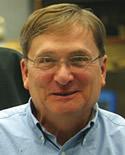
Peter Lord
(posthumous)
As a long-time environmental reporter for The Providence Journal, Peter Lord illuminated not only local concerns, but also gave context to national and international environmental topics that affect our lives. Over several decades as a reporter, Peter, who died this year at the age of 64, helped teach generations of Rhode Islanders about the importance of preserving Block Island, the risks to children's health posed by lead paint, and scores of other environmental subjects. He mentored many younger journalists to aspire to his curiosity, his integrity and his keen writing style. A long-time Rhode Island resident, Peter was fair minded in approaching complicated issues, and he posed the right questions to get to the core of the story he was writing. Peter was an award-winning journalist whose stories took him as far as Central America and the Arctic Circle. Peter joined The Journal as a reporter in 1979 and was assigned to the environmental beat in 1981. Over the next 30 years he earned a national reputation for his reporting. He was a board member of the Society of Environmental Journalists and journalism director of the Metcalf Institute for Marine and Environmental Journalism at the University of Rhode Island, where he also taught journalism courses. Lord, a resident of Matunuck, was a 1973 graduate of the University of Connecticut, and worked as a reporter at The Day in New London before coming to The Journal.
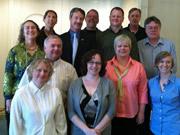
Northeast Recycling Council, Inc.
The Northeast Recycling Council, Inc. works with its 10-member states that include New England, Delaware, New Jersey, New York and Pennsylvania to support environmental and economic sustainability through source reduction, recycling, environmentally preferable purchasing and recycling market development. One example of its achievements is the Northeast Newspaper Publishers Agreement, a multi-year, multi-stakeholder initiative that led to newspaper publishers signing commitments to increase the use of recycled content newsprint, resulting in a demonstrated increase in minimum recycled content usage in the region. The Council also took the lead nationally in demonstrating the relationship between jobs, the economy and the recycling industry. It developed a methodology for conducting such an analysis and published Recycling Economic Information Study reports about the region in 2000 and updated it in 2009. In addition to this, the organization was the first to tackle the end-of-life management of electronics and collaborated with the Council of State Governments / Eastern Regional Conference to develop model regional electronics legislation, some of which has been adopted in a number of New England states. In other areas, the Council has staffed and supported the Toxics in Packaging Clearinghouse that has published several significant studies; conducted the first research into how to safely collect and manage unwanted medications from the general public; worked with 32 towns in Connecticut, Massachusetts, New Hampshire, Rhode Island, Vermont, New Jersey, New York, Pennsylvania and Delaware to promote source reduction, recycling and composting; delivered unique manure management workshops in New Hampshire, Vermont and New Jersey, including the development of a handbook and guidance document; and founded and hosts the sole national listserv dedicated to a discussion of environmentally preferable purchasing.
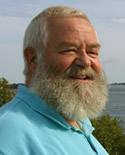
Joseph E. Payne
Few people can match Joe Payne's lifetime advocacy for clean water. In 1991, he was hired as the first employee of Friends of Casco Bay, a grassroots conservation organization in southern Maine. The community activists who started the organization in 1989 recognized his talents, and hired him as the Casco Baykeeper. Joe, a fisherman's grandson, has been a steward and voice for Casco Bay ever since. Joe, who grew up working on the bay, is a marine scientist whose actions are guided by both a passionate love for the bay and an understanding of its physical and biological dynamics. His science-based, collaborative approach to resolving threats to the bay's environmental health continues to be effective. He has spearheaded numerous conservation campaigns that benefit the bay and the entire Maine coast. He created an award-winning volunteer water quality monitoring program and made Casco Bay one of the most thoroughly sampled water bodies in the country. The monitoring work allowed the organization to identify and eliminate sources of fecal coliform pollution and allowed hundreds of acres of clam flats to be re-opened to harvesters. His achievements also include launching a mobile pumpout service for recreational boats, which has kept over 125,000 gallons of raw sewage out of Casco Bay. He sampled stormwater runoff for pesticides washing into the bay to support an education program to limit lawn chemicals, which is now a statewide effort, and initiated a lobster relocation project, rescuing 35,000 lobsters from the area to be dredged. He has also worked to raise awareness of the threat of coastal acidification from stormwater runoff and air deposits.
Individual
Amy S. Cannon
Beyond Benign, Wilmington, Mass.
Amy S. Cannon is executive director of an organization that works to change the way chemistry is taught. In her work at Beyond Benign, Amy aims to let students more easily connect chemistry, human health and the environment. The goal of the organization is to teach and learn green chemistry in a way that will help create a sustainable future. Beyond Benign was created to provide an approach and means for scientists, particularly those involved in green chemistry and sustainable science, to reach out to the public. It starts with the belief that all scientists should be able to explain their research in a simple manner to people from all backgrounds and of all ages. Under Amy's leadership, Beyond Benign won an American Chemistry Society award in 2011 recognizing the organization's work incorporating sustainability into chemistry education. Among her efforts in the past year, Amy began work on a curriculum to replace some of the most hazardous chemicals used in high school classrooms and worked on a program aimed at transforming chemistry in higher education. She brought together 10 colleges and universities around common goals of what 21st century chemistry should look like. Also in 2011, Amy did training in Liberty and Albany, NY, training about 70 teachers on green chemistry replacement labs.
Greg Gerritt
Environment Council of Rhode Island, Providence, R.I.
Greg has devoted his life to protecting and promoting natural ecosystems. More than forty years ago, he organized his high school to celebrate the first Earth Day in New York City, and since then he has worked in a number of different organizations to promote the greening of America. Before embarking on full time political and activist work, Greg ran a carpentry business and built a solar powered homestead. He has been a leading advocate for ensuring that ecology is a component of efforts to create a sustainable state economy. In his role at the Environment Council of Rhode Island, Greg organizes events, talking to school groups, helping to connect the various threads of the environmental community and fostering the development of the next generation of environmental activists and organizations - with a focus on environmental justice. One of Greg's greatest passions is composting, and he has been working tirelessly to increase the composting infrastructure in Rhode Island. Three years ago, he organized the first composting workshop in Providence for about 60 people under the auspices of Rhode Island's Urban Agriculture Task Force. The third annual Compost Conference and Trade Show was held this February. More than 250 attendees heard the call to action to divert organic waste from the Johnston landfill through a compost collection and processing program - on any scale. In addition, Greg runs a consulting practice called Prosperity for Rhode Island, which connects the healing ecosystems and prosperity in New England communities.
Patrick Herron
Mystic River Watershed Association, Arlington, Mass.
Patrick Herron, director of the Mystic River Watershed Association, has improved the lives of more than a half million residents living in Mystic River communities. The Mystic Monitoring Network, which uses volunteers to gather data, has been integral to the association's work for more than a decade. Patrick, a dedicated scientist, has used data collected through the network to raise awareness about discharges that pollute the Mystic River and other resources in its watershed. He drew attention to the problem of sanitary sewer overflows in the watershed because he believed that rain and snow were causing contamination of the river and neighboring waters. With help from university interns and dedicated volunteer monitors, Patrick monitored and calculated the impact of discharges on river ecology and water chemistry. He created an online sewer overflow reporting form that made data collected easily available. This information helped the association inform citizens and helped local officials identify overflow points. His conversations with local water and sewer officials influenced the Massachusetts Water Resources Authority to study the pipe system and facilities in the Mystic River district to determine if they could prevent ongoing overflows. Patrick also created a Mystic River Herring Monitoring Network to be launched this spring, and advocated for installation of green infrastructure in the Mystic River Watershed. He has partnered with local officials, community organizations, environmental advocacy groups and a variety of academic partners in the watershed. Through these collaborations, he has brought hope and direction for the concerns of residents and decision-makers in the Mystic River watershed.
Scott Hilton
NH Department of Environmental Services, Portsmouth, NH
Scott Hilton of the New Hampshire Department of Environmental Services has worked tirelessly for the cleanup and successful redevelopment of the former Pease Air Force Base Superfund Site in Seacoast, New Hampshire. Now known as Pease International Tradeport & Airport, the site is home to about 250 businesses and 7,000 employees. When the Air Force base closed in 1991, Pease was considered one of the most contaminated Superfund sites in New England. The designation of the 4,300-acre installation as a Superfund site and the identification of over 50 potentially contaminated areas of concern represented a monumental roadblock to transferring the property to the Pease Development Authority for reuse and economic redevelopment. A dedicated cleanup team of staff from the Air Force, the DES and EPA developed and executed innovative cleanup approaches. More than $180 million has been spent or obligated to restore the Pease environment, and numerous cleanup actions, concurrent with major on-going Pease redevelopment, have been completed. This cleanup and redevelopment would not be a reality without Scott Hilton's expertise, management skills, tenacity and commitment to quality. Scott began his efforts at Pease in the early-1990s as a DES hydrologist and later as project manager and sole DES representative. He handled some of the most difficult challenges with competence and enthusiasm, advocating for a strong relationship between the two agencies and presenting a unified regulatory voice to the Air Force on cleanup efforts. Scott was instrumental in protecting the Haven Aquifer, a significant ground water resource adjacent to the former base. He urged that a backup wellhead ground water treatment system be constructed in case Air Force efforts failed. This system ensures that potable water will always be available to the Pease Tradeport and the Seacoast. Scott's numerous environmental accomplishments stand out as examples of how the EPA-state collaboration can accomplish critical goals for cleanup and beneficial reuse of a contaminated site.
Anthony Leiserowitz
Yale School of Forestry & Environmental Studies, New Haven, Conn.
Dr. Anthony Leiserowitz at the Yale School of Forestry & Environmental Studies has established a center dedicated to making sure people communicating about the environment know who their audience is and speak in a way that reaches them. Anthony founded the Yale Center for Environmental Communication, which tracks how people think about and understand the state of the environment. The center designs new ways to engage the public in environmental science and empowers teachers and other communicators to more effectively engage their audiences. For example, research by Anthony has identified "Global Warming's Six Americas" – six unique audiences that each respond to the issue in very different ways, each requiring a tailored communication strategy. Anthony has also found that most Americans think of climate change as a risk only to far-away people and species. He found, though, that Americans become more concerned when they are informed about health risks. Among those using the center's research are the White House, the U.S. National Academy of Sciences, the National Science Foundation, NASA and EPA. Anthony publishes the Yale Forum on Climate Change & the Media, a source of climate reporting, analysis, and resources for journalists. And since most Americans get their news and information from local TV, Anthony is training broadcast meteorologists to integrate climate change into their broadcasts, making this issue relate to the lives of all Americans.
Julia Lloyd Wright
Weathersfield, Vt.
Julia Lloyd Wright is the volunteer energy coordinator for her town of Weathersfield, Vermont. Julia has worked to make the town more energy-efficient, helping it save money and reduce greenhouse gases. She has visited all of about 30 businesses in Weathersfield to review lighting fixtures and distribute information on lighting upgrades and state rebates. To help residents, Julia created and distributes a flyer that describes how residents can become more efficient. Julia works to get the funds needed for energy improvements, including a grant from the regional planning commission for an energy audit at the local library and funding for a new thermostat and window insulation. She got funding for an insulation project at the town garage and she got a summer intern from EPA to help measure progress in her town's municipal buildings. Julia collected energy bills for town buildings and the intern entered the energy data. The results showed the town garage had a 40 percent decrease in energy use from such efficiency measures as replacing garage doors, adding new lighting and insulating the roof. Julia has represented Weathersfield at Vermont energy conferences, regional energy roundtables, and seminars on energy efficiency and clean energy at Vermont Law School. Her latest goal is to help homeowners reduce energy usage by 10 percent. Julia sees what has to be done, and then does the work. Her efforts have helped Weathersfield become more energy-efficient. She is the embodiment of the Environmental Merit Award.
Kevin O'Maley
Manchester, NH
Since committing to the EPA New England's Community Energy Challenge in 2007, the city of Manchester, New Hampshire, has reduced its energy bills by $800,000. This success can be traced back to Kevin O'Maley, Manchester's chief facilities manager. Kevin led the city to use EPA's ENERGY STAR software to measure energy use at 42 buildings, including 22 schools. He used information from energy audits to review inexpensive ways the city could energy use in its buildings, including behavior modification, lighting upgrades and heating and air conditioning changes in the short run and energy retrofits for the long term. Kevin put together funding for energy projects, like roof-mounted heat recovery systems, new boilers and fluorescent lighting with motion sensors in schools. He put in place a district-wide energy policy that puts heating at a maximum of 68°F. Overall, energy use at schools went down 15 percent. During 2011, Manchester also reduced costs in the school district by $291,000. The Highland-Goffe's Falls Elementary School in Manchester in 2011 earned the ENERGY STAR label certification and Manchester West High School was the top New England school in the 2011 ENERGY STAR Battle of the Buildings. The school district's goal is to have all schools ENERGY STAR certified by the end of 2012. The energy efficiency work that Kevin has done in Manchester is legendary in New Hampshire. He also mentors other communities and shared his experiences at the 4th annual Local Energy Solutions Conference in Concord.
Norm Staunton
Association of Vermont Recyclers, Colchester, Vt.
Norm Staunton, executive director and CEO of the Association of Vermont Recyclers, has guided the organization through the most challenging period in its 30-year history. Norm, who is also Vermont state e-waste director for the Northeast Resource Recovery Association, has ensured consistent educational outreach through the state on an increasingly tight budget and since July 2011 has managed a new, statewide, free program that has resulted in millions of pounds of electronic waste getting recycled. This program, called the Extended Producer Responsibility Electronics Recycling Program, is co-sponsored by the state and the electronics manufacturers. To date, almost 3.1 million pounds of electronic waste have been recycled at no cost to Vermont residents. The organization expects to exceed its 3.4 million-pound target for this year by more than a million pounds. Without Norm's expertise and dedication to recycling, this would not have been possible. Norm's other areas of work include designing and improving school recycling programs, organics management and solid waste policy. He should be recognized this year for the pivotal role he has played in bringing free electronic recycling to Vermont households and in launching a program that should serve as a model nationwide.
Kevin Taylor
Waterbury Development Corporation, Waterbury, Conn.
Kevin Taylor, project manager at the Waterbury Development Corporation, built one of the region's leading brownfields programs from the ground up in less than two years. This success was possible only through the talents of a trusted, inspiring individual. Born and bred in this once industrial city, Kevin studied architecture in college then moved back to Waterbury. At the Waterbury Development Corporation, he works to revitalize the city by redeveloping properties, including brownfields. Kevin addresses not one or two properties but dozens of properties at once. In 2008, he assembled a team to submit the city's first-ever brownfields grant proposals with a bold mission of applying for every grant for which the city was eligible. Every one of the grants was funded and Waterbury won $1.2 million to assess brownfields and clean up two key parcels. Today, the city has assessed or cleaned up nearly 20 brownfield sites and has one of the most innovative brownfields programs in the region. Kevin succeeds in part by helping others envision creative ways to reuse buildings. He helped an organization dedicated to urban gardening envision the transformation of a brownfield into a community garden. He helped the Waterbury Police Athletic League to risk buying two brownfields properties to clean up as ball fields. And he inspired a leap of faith by an anti-poverty organization to see the potential of the former Waterbury Clock facility at North Square as a place for their programs and mixed-use redevelopment. Kevin helps community groups see the potential of brownfields, and then he helps them get the resources and support to finish the job.
John Torgan
The Nature Conservancy, Rhode Island Chapter
John Torgan began as director of ocean and coastal conservation at the Rhode Island chapter of the Nature Conservancy in 2011, after 18 years at Save the Bay serving as Baykeeper for Narragansett Bay. A leading environmental advocate and trusted voice for Rhode Island's waters, John is a native Rhode Islander who grew up spending summers on the South County coast, working on charter fishing boats and on Block Island. He earned an undergraduate degree in environmental studies/biology at Union College in New York. Before returning to Rhode Island, John worked for a consulting firm working on rivers in Upstate New York and Michigan. John joined Save the Bay in 1993 and became Narragansett Baykeeper in 1994, becoming one of the nation's first and longest-serving Waterkeepers in what is now a global organization of more than 200 programs. As Baykeeper, John advocated for clean water and communicated the importance of Rhode Island's waters to broad audiences and policy makers. During his tenure, an oil-barge tragedy spurred Save the Bay to lead a successful drive to toughen state oil-shipping laws. John also waged a campaign to force the Brayton Point Power Station to minimize its impact on Mount Hope Bay. He advocated for combined sewer-overflow improvements to reduce raw sewage from being dumped into the bay during heavy rains. And he fought efforts to create a deep-water port at Quonset Point and a liquefied natural gas terminal in Fall River. Despite being Baykeeper, John sought to broaden the agency's focus to include inland rivers, the ocean and coastal waters. At the Nature Conservancy, he continues to work to protect and restore the ecological health of the state's waters and to integrate these efforts across the regional ecosystem.
Betsey Wingfield
Hartford, Conn.
Betsey Wingfield, who works in the Connecticut Department of Energy and Environmental Protection, led the way in establishing a consensus to come up with effective laws regulating stream flow. After six years without legislative support, Betsey and her staff, along with other interested parties, sought common ground in this divisive undertaking. In January 2011, the group asked EPA New England to point them in the right direction. Soon after, the group took ownership of the process with an impressive display of commitment, creativity and sheer determination over 10 months. In November, the group announced that the state legislature had approved regulations proposed by the group. In the words of DEEP Commissioner Daniel Esty, "These new regulations are based on sound science and environmental needs, but offer a realistic, flexible and cost-effective means of accomplishing our water-related goals." The regulations include rules governing the release of water from dams, a public process to assign rivers to one of four classes and special provisions to help balance human and ecological needs.
Environmental, Community, Academia, & Nonprofit
Alliance for Climate Education
Somerville, Mass.
The Alliance for Climate Education combines the best available climate science and proven models for citizen engagement to create an innovative and highly scalable approach to increasing high school climate science literacy and advancing climate solutions. It educates high school students about the basics of climate change and provides them, and their teachers, with a set of resources they can use to educate themselves about the issue, take on carbon emissions reduction projects in their schools and communities and gain leadership experience. Since its inception, the Alliance has reached more than one million teens in more than 16 states. The founders of the organization realized the power of young people as a force that could make the biggest impact on climate change, particularly high school students; thus, it brought together a team of best educators, communicators and creative minds in 2008 to develop its assembly presentation and to explain basic climate science. The result was a compelling presentation that uses a blend of animation, music, video, storytelling and a call to action. The Alliance for Climate Education's approach teaches students and helps teens determine how their ideas and passions can contribute to climate solutions in their communities.
Baywatchers Program
Buzzards Bay Coalition
New Bedford, Mass.
The Baywatchers Program, the largest coastal monitoring effort in Massachusetts, covers more than a quarter of the state's coastline and has been administered by the Buzzards Bay Coalition since 1992. The Coalition involves citizens evaluating water quality and ecological trends. Baywatchers' citizen volunteers have tested water quality every five days in the summer for 20 years. More than 700 citizen volunteers have been trained to monitor dissolved oxygen, temperature, salinity, and water clarity, and have done so at more than 200 locations. Baywatchers provides data that 18 communities around the bay rely on when making decisions about local estuary restoration. The Buzzards Bay Coalition publishes reports on the data collected, data used to develop environmental policy, regulations, and permitting criteria. This data motivated the town of Wareham to upgrade its wastewater treatment plant. Measured improvements in water quality below the plant showed the value of the investment. The Baywatchers Program, directed by Tony Williams, has shown unrelenting diligence in monitoring and seeking to ease threats to the Buzzards Bay ecosystem. They have analyzed bay water quality over 20 years, educating and training hundreds of citizen volunteers, and have published the findings to develop widespread community support.
BizNGO
West Medford, Mass.
BizNGO is a non-profit environmental organization that works to protect consumers from toxic chemicals. Also known as the Business-NGO Working Group, this organization promotes creation and use of safer chemicals and sustainable materials in a way that supports a healthy economy, healthy environment, and healthy people. The organization released two important frameworks to help companies choose more sustainable plastics and safer chemicals for their products: 1) The Principles for Sustainable Plastics, and 2) Chemical Alternatives Assessment Protocol (v.1.0): How to Select Safer Alternatives to Chemicals of Concern to Human Health or the Environment. This represents the collective work of Mark Rossi, Chair and vital member of the New England Green Chemistry Initiative, and his colleagues. Together they are working to advance safer chemicals and materials in consumer products. These two documents are the result of dedication and an ability to help business to business communication and cooperation. BizNGO also runs annual two-day conferences at sites around New England. The assessment and evaluation tools provided by BizNGO will help companies identify hazardous chemicals along the entire supply chain and will guide them in choosing safer alternatives. This lifecycle approach encourages sustainability and contributes to the public health and environmental protection in an economically sustainable way.
Goodwin College
East Hartford, Conn.
In 2005, Goodwin College announced dramatic plans to build a riverfront campus along Riverside Drive in East Hartford. With the help of EPA and other agencies, Goodwin created a new campus community with educational, economic, and environmental benefits for the region and beyond. The effort involved demolishing more than 30 above-ground oil tanks and other defunct industrial installations before redeveloping a formerly unusable industrial area. Late 2008, the college opened the 109,000 square-foot academic center. A year later, it rolled out its environmental studies degree program, which took advantage of access to the river and undeveloped flood plains for study of river ecology. In 2010, the Connecticut River Academy, an environmentally-themed magnet high school, also opened at the River Campus in a temporary space. The River Campus has grown into a cultural and educational hub. More than 10,000 people commute to campus each week, providing customers for local businesses. As of January, Goodwin had 526 employees and an annual payroll of $12.5 million. The college has more than doubled its workforce since 2006, not including new jobs at the magnet high school and an early childhood center. More than half of the 3,000 students at Goodwin are first-generation college students, with a student body that reflects the diversity of Hartford.
Harwich Conservation Trust
Harwich, Mass.
The non-profit Harwich Conservation Trust established the "Save Land – Save Water Initiative" to preserve key lands that protect water resources in Chatham and Harwich. This nomination recognizes the local land trust's ability to forge public-private partnerships and preserve critical land known as the Mill Pond Woodlands to protect public drinking water. The trust led the effort to coordinate with the land seller, town committees, boards, and state officials to get $2 million in public funding to buy land for water protection. The trust also wrote a land management plan, which was approved by both Chatham and Harwich. It specified that recreation on this preserved land will be limited to passive pursuits like walking and nature study. In 2011, the trust's work resulted in the Town of Harwich buying half of the land and the Town of Chatham buying the other half. Meanwhile, the state Executive Office of Energy & Environmental Affairs and the state Department of Environmental Protection each donated $500,000. To ensure permanent land protection, the Harwich Conservation Trust and Chatham Conservation Foundation jointly hold a conservation restriction on the entire 38.7-acre tract that links to another 235 acres of open space. Preserving this tract helps protect the water quality of 11 municipal well sites serving about 20,000 homes. The Harwich Conservation Trust's collaboration with two towns, two state agencies, and a sister land trust showed how well it can foster a strong public-private partnership around the goal of preserving land.
Health Care Without Harm
Jamaica Plain and Longmeadow, Mass.
Gary Cohen and Bill Ravanesi
Health Care Without Harm, dedicated to helping create a more ecologically sustainable healthcare industry, consistently has been a leading advocate for green chemistry in the healthcare industry, locally and nationally. The organization, with Gary Cohen as its founder and executive director, was a major force behind the decision of one of the country's largest healthcare providers to convert its intravenous equipment to more eco-friendly alternatives. This equipment is now free of two chemicals shown to harm humans and the environment. Health Care Without Harm is also actively engaged in supporting green chemistry research with academic and other partners to identify safer alternatives in hospital research laboratories and in finding bio-polymers to replace petroleum-based products in the healthcare sector. It is instrumental in advancing the Healthier Hospitals Initiative, a coalition of major health systems and organizations committed to improving sustainability and safety across the healthcare sector. Bill Ravanesi, regional director, helps New England hospitals in toxicity and waste reduction, green building services, energy efficiency and climate change programs, focusing on sustainability and resiliency. He is responsible for organizing program development and implementation, legislative and regulatory advocacy and policy reform initiatives and has engaged hospitals all over New England in adopting new ways of doing business that meet the challenge of environmental responsibility.
Lake Champlain International
Williston, Vt
James Ehlers and Scott Goddard
Lake Champlain, the sixth largest lake in the U.S., is enjoyed by hundreds of thousands of people each year for recreation and contributes about $4 billion a year to the region's economy through tourism. For 12 years Lake Champlain International has worked to address water pollution runoff, an underfunded wastewater infrastructure, nuisance species and fish passage barriers. It has done this through innovative programs, motivating the public, and working with other organizations, government agencies, the media and the sports community. The organization's BLUE® certification program has been a major success story. The program educates homeowners about urban stormwater runoff and motivates them to install stormwater prevention features while they learn practices to protect their watershed. More than 3,000 homeowners in five towns have been reached. The organization has also worked with partners to acquire more than $2 million in federal funds for Lake Champlain conservation projects and has represented citizens before the state in efforts to reduce agricultural runoff pollution from farms. In addition, it is collaborating with the state to provide funding for wastewater infrastructure improvements. Lake Champlain International also secured $100,000 for colonial nesting birds, including money to reduce the population of double-crested cormorants. The organization's outreach activities to youth include an annual Father's Day fishing derby, the Bobber Bob youth education program that reaches more than 1,000 children and their families and donations of some $30,000 to local mentoring organizations. Finally, Lake Champlain International was granted a legal motion to comment on the Swanton Dam hydroelectric project, whose removal will improve the quality of native fisheries in the lake. Board Director Scott Goddard and former Board Director James Ehlers have been instrumental to the success of this organization.
Long Island Sound Study Citizens Advisory Committee
New Haven, Conn.
Curt Johnson and Nancy Seligson, Co-chairs
The volunteers of the Long Island Sound Study Citizens Advisory Committee have helped bring together a unified group of people dedicated to improving water quality in the sound. This group includes volunteers from community organizations, businesses, educational organizations, environmental groups and local government. Together these groups developed "SoundVision," a community blueprint for clean water, healthy habitats, and economically strong communities. Before forming "Sound Vision," citizen volunteers reviewed the existing Comprehensive Conservation and Management Plan for Long Island Sound and tracked what had already been spent protecting and restoring the sound, looking at program outcomes. In addition, members of the advisory committee were surveyed and workshops were held with Connecticut and New York residents. The result was the two-year citizens' action plan that includes themes and goals for the sound. It also includes steps to achieve those results, ways to measure success, and an outreach strategy to connect with the entire Long Island Sound community. Through their work, and under the leadership of co-chairs Curt Johnson and Nancy Seligson, the citizens helped bring about a united community of diverse interests to protect and restore Long Island Sound.
Metropolitan Area Planning Council
Boston, Mass.
The Metropolitan Area Planning Council, the regional planning agency for 101 cities and towns in the Boston area, periodically updates its plan addressing issues such as transportation, housing and the environment. A few years ago, the council came up with a plan that would help reshape how Greater Boston will develop over the next 25 years. More than 5,000 people from the region worked on the plan, titled MetroFuture. In a massive effort, the council staff showed thousands of people the sprawling growth into the fields and forests that would result if the region continued to grow on the same trajectory as it had been since the 1950s. It also showed the historic under-investment in historic downtowns and town centers in the past. This development pattern has led to river and stream contamination, more air pollution and greater obesity as people drive farther, walk or bike less. The council presented the alternative: development of areas served by transit systems and close to jobs, shops and schools. The council's plan, adopted in 2008, calls for conserving areas with significant natural, scenic, agricultural and recreational value. In recognition of the strength and promise of MetroFuture, the U.S. Department of Housing and Urban Development in 2010 awarded the council $4 million to help them work with communities to put the plan in place. The environmental benefits of this plan include cleaner air, water and land as well as healthier residents of Greater Boston.
The New England Consortium
University of Massachusetts – Lowell
Lowell, Mass.
The New England Consortium trains workers in hazardous waste operations, emergency response, and health and safety. Since 1987, this partnership between the community and the Center for Health Promotion and Research at UMass/Lowell has trained more than 27,000 workers in 1,700 courses. In 2011, the consortium held 145 courses with 21,985 hours of instruction in its core training program. It also provided open enrollment and custom trainings for public and private sector firms, regulatory officials and organizations, and job training programs. It partnered with EPA New England to offer training to New England's Native American tribes. The consortium is one of 20 national programs administered by the National Institute of Environmental Health Sciences Worker Education Training Program. Under the American Recovery and Reinvestment Act, the consortium for two years trained 1027 people, including municipal and state workers on transportation, construction and other infrastructure projects, employees in green energy start-up firms, and people in job training programs who were likely to be interviewed for Superfund cleanup projects or for jobs in green energy. The project served job training programs in New Bedford, Worcester, Holyoke and Hartford, Conn. Finally, the consortium developed a training curriculum that gave workers and environmental activists the tools to advocate for green chemistry and for safer alternatives to reduce toxic contamination.
New England Rain Garden Training Team
Amy Boyajian, Caitrin Higgins, Jillian Thompson,
Amy Rowe (Rutgers Cooperative Extension);
Michael Dietz, Chet Arnold (UConn NEMO Program)
Stormwater pollution is the number one contributor to nutrient loadings that lead to water quality impairments. Most storms in the region require more low-tech, decentralized cost-effective solutions. Rain gardens provide an innovative pollution prevention answer to addressing stormwater challenges, and they foster new partnerships and capacity in the community. Rain garden trainings address a range of problems from flooding and stormwater to combined sewer overflows and have provided skills towards Green Jobs, particularly in low income and minority neighborhoods in partnership with such groups as Groundwork Providence that train and potentially provide jobs in the landscaping area. The Rutgers Cooperative Extension Water Resources Program-Rain Garden Training Team and the University of Connecticut Nonpoint Education for Municipal Officials Program collaborated with EPA, cities and community partners in New England over the past two years to provide two-day training to residents, watershed and neighborhood groups, youth and staff from Groundwork Providence, from low-income and minority communities in the function, design, construction and maintenance of rain gardens for stormwater management. They also have worked in partnership with community partners, mayors, departments of public works, and park staff from the cities of Bridgeport, Worcester and Hartford; neighborhood and community groups such as Groundwork Providence, watershed groups, the State of Connecticut, the Massachusetts DEPs, Providence Housing Authority, Blackstone Stormwater Coalition and universities. Over 500 people have been trained, and rain gardens have been installed at the Beardsley Zoo in Bridgeport, the Magnet School in Hartford, Roger Williams Park Botanical Center, the Manton Heights Housing Development in Providence, the Worcester Youth Center, and the VA Central Western MA Healthcare system Center in Leeds, Massachusetts.
Ferdi L. Hellweger
Northeastern University
Department of Civil and Environmental Engineering
Boston, Mass.
Ferdi Hellweger of Northeastern University has done as much as almost anyone to further understanding of bacterial contamination of the Charles and Muddy rivers. Since he arrived in Boston in 2004, Ferdi has focused the research of many graduate students on solving the impediments to swimming in the Charles River Basin. He also began an undergraduate research group to focus on the Charles, and for several summers has included high school students and teachers in the research. After gathering high-resolution surveys of fecal bacteria in the Charles Basin, he applied his modeling skills to show how all of the bacterial results could be modeled from a single contaminated input at the Muddy River/Stony Brook confluence with the Charles. He made this model into a presentation video which in two minutes adeptly explains the complexity of this contamination. Ferdi's use of YouTube, blogs, online photo albums, and other new media are doing much to popularize environmental engineering and draw more young scientists into this exciting field. In 2011 alone, Ferdi published a major paper on the Muddy River monitoring for the Muddy River Project Oversight Committee, and conducted extensive bacterial monitoring in support of possible swimming sites for the Charles River Conservancy.
Mr. Wells' 4th Grade Class
The Park School
Brookline, Mass.
The students in Ted Wells' 4th grade class loved the classic Dr. Seuss story The Lorax; however, when they saw that the movie promotion from Universal Studios lacked enough of an environmental message, they launched the "Lorax Petition Project" on Change.org and gathered more than 50,000 signatures. As a result, Universal changed The Lorax web page almost exactly as requested by the students at Park School - even using the Truffala tree image for a button and linking the Green Tips Random House page. In addition, Universal now has some environmental partnerships developing with Scholastic Lessons, the AdCouncil, a U.S. Forest Service "get outside" public service announcement and two other projects with Whole Foods and Seventh Generation. The fourth graders at Park School rallied 57,000 people and groups, including such celebrities as Ed Norton and musicians such as 30 Seconds to Mars and Solving for X!, who know the meaning of "Unless". In addition, they made posters, wrote a script in Dr. Seuss' style and shot a video. They learned many lessons along the way, including the fact that they can make a difference. As stated in The Lorax, "Unless someone like you cares a whole awful lot, nothing's going to get better, it's not."
Product Stewardship Institute
Boston, Mass.
The Product Stewardship Institute, a national organization, was created to fundamentally change waste management systems. Consumers use hundreds of products daily, many of which designed to become obsolete in a few years. The emerging product stewardship movement tries to ensure that those who manufacture, sell and use consumer products take responsibility for reducing the impacts. The Product Stewardship Institute was founded in 2000 through an agreement with the state and the University of Massachusetts at Lowell. It works with governments and organizations in New England to develop a regional approach to product stewardship. The institute laid groundwork for passage of legislation in the region, and it helped develop Maine's cutting edge law in 2006 regarding mercury thermostats. This law resulted in one of the highest per-capita rates of collection of thermostats in the country. Laws modeled on Maine's law were passed in Vermont and Rhode Island, along with six other states nationally. Maine also passed the nation's first product stewardship legislation for mercury lighting. Facilitated by the Institute, Connecticut's 2011 paint stewardship law was the third law in the country that resulted from a national agreement between paint manufacturers, retailers, government agencies, and other key stakeholders. This law is expected to save Connecticut up to $7 million per year and recover up to 880,000 gallons of leftover paint, much of which will be turned into new paint by a recycled paint manufacturer that plans to move to Connecticut because of the new law. The Product Stewardship Institute has been at the center of the nation's electronics recycling for 10 years. In addition, the organization promotes the use of voluntary recycling programs for rechargeable batteries, mercury thermostats, mercury lamps electronics, cell phones, and pharmaceuticals and has partnered with Catalog Choice, an online service that allows residents to opt-out of receiving unwanted catalogs, phone books, and junk mail.
The Regional Environmental Council
Worcester, Mass.
The Regional Environmental Council has been working since 2005 to eliminate childhood lead poisoning in Worcester. In 2006, it was selected by local community partner organizations and the Massachusetts Department of Public Health to coordinate the Worcester Green and Healthy Homes Coalition with funding from the Department of Public Health. The coalition now includes 30 partners from diverse sectors, including municipal and state agencies, landlord and tenant associations, neighborhood health centers, refugee resettlement and affordable housing agencies, and grassroots community-based organizations representing Worcester's Latino, Southeast Asian and African communities. Through the coalition, the Regional Environmental Council has educated and organized the community throughout Worcester to educate and empower residents, with a special focus on highest-risk neighborhoods. It has reached more than 35,000 residents, conducted over 1,600 outreach events and brought substantial new resources to the city to help create healthy and affordable housing. In partnership with the city, these two organizations have received three grants totaling about $9 million from the U.S. Department of Housing and Urban Development to abate 600 units of housing. The coalition is subcontracted by the City of Worcester through the Regional Environmental Council to conduct all outreach, education, and marketing programs for this grant in high-risk neighborhoods and among highest-risk communities. Through their efforts, Worcester is on track to exceed the 600-unit goal. The council has contributed to dramatic reductions in elevated blood lead levels for children under age 6 in Worcester, a challenge worthy of recognition.
Worcester Business Development Corporation
Worcester, Mass.
The Worcester Business Development Corporation has adapted its mission to fit the changing economy. From industrial parks to science parks to brownfields, this organization has found innovative ways to use contaminated and blighted properties in ways that can benefit the community. Along with New Garden Park, its charitable arm, the development corporation has created thousands of jobs and generated millions of dollars in annual taxes. The recent Voke School Project involved the cleanup and redevelopment of the abandoned Worcester Vocational High School, which is under agreement for construction of 84 units of mixed income housing. This 11-acre mixed-use development called Gateway Park will be a "gateway" for the community's emerging biotechnology and life sciences industry. The project is expected to create more than 2000 jobs and add $6.6 million to the city's tax base. At another project located at 75 Quinsigamond Ave., the WBCD successfully secured the funding needed to remediate the petroleum contamination and demolish the building so that the former abandoned bakery building could be turned into a private development site. The development corporation's success continues with the newly acquired Worcester Telegram and Gazette building on Franklin Street, where a master plan for the area is underway in partnership with the city. All together, more than $300 million in investments have been brought to the city and surrounding communities through the corporation's projects, resulting in renewed social, environmental and economic vitality and improving the quality of life for this disproportionately impacted and economically challenged area.
Governmental
Connecticut DPH, Drinking Water Section
Hartford, Conn.
Vermont DEC, Drinking Water and Groundwater Protection Division
Winooski, Vt.
Vermont Rural Water Association
Essex Junction, Vt.
Staff and managers of the Drinking Water Programs in Connecticut and Vermont, along with their partners, played an impressive role in responding to the aftermath of Tropical Storm Irene which slammed into New England last August. Although their stories were different, both states faced daunting challenges considering the extent of potential problems relating to hundreds of water systems and the safety of public drinking water. In Connecticut, about 770,000 customers, including public water systems, lost power after trees knocked down power lines. Water systems serving large populations were for the most part ready with emergency generators, but small water systems often stopped running, creating a risk of contamination. Employees of the CT Department of Public Health had to work quickly and intensively to determine if hundreds of water systems were operating and if not, what they needed to start back up. Because of the many small systems that lost pressure, the Drinking Water Program in CT DPH had to expeditiously issue and manage 137 boil water advisories affecting more than 16,000 people. All of this was accomplished because of clear guidance and constant communication with the water sector, local officials, and the public. In Vermont, rising rivers washed out roads and left towns isolated. Much of the Vermont Department of Environmental Conservation, including the Water Supply Division, was literally under water, with 90 percent of its files and computers lost or destroyed. Helping impacted water systems became a monumental task. Despite the communication challenges, the staff of VT DEC persevered, finding ways to contact and assist the public water supplies impacted by the storm. Staff from the Drinking Water Program used home computers and personal cell phones, often calling from ad-hoc meetings in muddy parking lots. With key and timely assistance from Vermont Rural Water Association, the staff reached out to over a hundred water systems in the impacted areas. In the end, 30 public water supply systems, serving more than 16,000 people, were put on boil water orders and effectively managed throughout the water crisis. What made these state responses truly outstanding was the way dedicated drinking water program employees continued to work long hours in difficult conditions, despite personal losses. Despite the devastation, within a few short weeks the vast majority of water systems were back to normal operations. The dedication of these Drinking Water Programs to ensure the safety of public drinking water for the citizens of Connecticut and Vermont, even in difficult times, was truly unprecedented.
Mashpee Wampanoag Tribe, Natural Resources Department
Mashpee, Mass
When the Mashpee Wampanoag Tribe formed its Natural Resources Department in March 2008, water quality was the most pressing environmental problem of nearby waterways, including the Popponesset Bay. Three years earlier, the bay had seen a major fish kill as a result of nutrient overload. The tribe viewed the fish kill as imminent threat to their traditional way of life. With grant funding, the Natural Resources Department planted 200,000 oyster seeds in 2009 in partnership with the Town of Mashpee and developed a bay restoration project. This was just one of the many accomplishments of the tribe's Natural Resources Department that merit recognition. With help from water quality partners, the department also collected water quality data that led to improved water quality and inspired other communities to develop large aquaculture projects in similar estuarine systems. The environmental health and quality of the bay waters has stopped declining, an indicator of the success of the oyster farming operation thus far. The department also sought to establish a biomass environment in the bay big enough to sustain a wild population of oysters, since wild oysters had been absent for a decade. There is evidence now of a wild oyster population in the bay. The Natural Resources Department's commitment to Popponesset Bay by way of this innovative and sustainable environmental project is a monumental achievement.
U.S. Department of Veterans Affairs, Massachusetts National Cemetery
Bourne, Mass.
The U.S. Department of Veterans Affairs operates the 750-acre Massachusetts National Cemetery in Bourne, Massachusetts and irrigates 117 acres with the Cape Cod Aquifer, using water and energy. It now irrigates 117 acres with 30 million gallons a year of water from the groundwater treatment system at adjacent Otis Air National Guard Base instead of direct use of the aquifer. It also installed a 50-kilowatt wind turbine in 2011 to provide electricity for irrigation pumping and a new administration building. The wind turbine provides 100% of the energy for the irrigation system and will provide all energy for their new administration building. It is the first large wind turbine for the VA, and may be the first Net-Zero energy use building in the department. Contaminated groundwater from Otis passes through activated carbon filters before cemetery irrigation use. Normally, it is placed back into the aquifer though trenches and a well. It is the largest turf irrigation reuse of Air Force's reclaimed water and is used as an example at their training conferences and outreach activities. The life of the groundwater treatment system corresponds to total water savings of approximately 1.8 billion gallons over the life of the system. The water used would have cost $180,000/year from their potable drinking water provider, or $6.3 million over the life of the system. The project illustrated cooperation between three federal agencies and one state agency to reduce potable water use through reuse of reclaimed water. It also exceeds the 26% potable water reduction requirement of the Federal Leadership in Environmental, Energy, and Economic Performance Executive Order and is 10 years ahead of schedule for this goal. The 50-kilowatt wind turbine is the largest wind turbine installed in the VA to date and will be the model for smaller wind turbines at VA Medical Centers and other cemeteries. The new 2,500 square foot administration building under design features minimal energy use and high efficiency heat pumps to minimize energy use, and the wind turbine should be able to provide power for both the irrigation system and the administration building.
Business, Industry, Trade or Professional
Cape Air
Hyannis, Mass.
Cape Air is one of the largest independent regional airlines in the country. The company has been conscious of its impact since it was founded by Dan Wolf in 1989. Making more than 850 flights a day and carrying almost 650,000 customers a year, Cape Air is making a global impact. Together with its local utility, Cape Light Compact, the company aims to reduce its electricity footprint by 25 percent and outlined steps to convert its headquarters to net-zero energy-use. The insulation of an on-site 258-kilowatt solar system continues to outperform its predictions – generating 121, 202 kilowatt hours and offsetting 209,000 pounds of carbon dioxide, while producing nearly 90 percent of the building's electricity. Outside its Massachusetts hub, Cape Air's Essential Air Service department in Vermont supports cow power – a methane gas from local farms. Thanks to local agriculture, this form of green energy makes up 25 percent of the annual terminal electrical bill and 100 percent of the airport's rescue equipment. Cape Air's innovative green initiatives also reach customers and employees. In August 2011, the airline distributed 2,550 compact fluorescent bulbs to 850 employees to reduce energy consumption. At the community base, Cape Air is involved with True2o, Housing Assistance Corporation's Community Green Project, Habitat for Humanity and other environmental organizations. The company's work to protect the environment and save money benefits clients, employees and the community.
Ethan Allen Operations, Inc.
Danbury, Conn.
Ethan Allen, a manufacturer of hardwood furniture in Orleans and Beecher Falls, Vermont, is a working example of what happens when a company brings business together with community involvement, sustainable forestry practices and environmental leadership. As Chairman and President M. Farooq Kathwari said, "We are a strong American brand with global reach." At the local level, the company reduced air pollutant emissions of the last 10 years by 95 percent, and 234,800 pounds. The company's commitment to using more eco-friendly chemicals in its finishes has reduced air pollution and hazardous waste generation. Ethan Allen Operations also works to maintain sound relationships with suppliers to increase productivity while reducing waste and emissions. A Green Suppliers Network improvement lets Ethan Allen improve the environment while still staying focused on business economy. On a larger level, Ethan Allen leads the way in environmental, health, and safety standards, working to integrate business objectives while ensuring the safety of employees and protecting the environment. The company's efforts in New England have provided a model for its factories in North Carolina, New Jersey, Mexico, and Honduras. As a leader in sustainable furniture manufacturing, Ethan Allen is known for its quality products and positive business culture.
Greenwich Hospital
Greenwich, Conn.
Thomas Lazzaro, John Huber
Kent Hospital, Warwick, RI
Joseph DiPietro, Thomas Benjamin
Last year, the EPA New England assistance group started looking for hospitals that had examples of rain gardens and other sustainable landscaping. EPA found two New England hospitals that were not only early adopters of sustainable landscaping in a healthcare setting, but had both worked with EPA to promote sustainable landscaping at other New England hospitals. Kent Hospital in Warwick, Rhode Island and Greenwich Hospital in Greenwich, Connecticut, gave freely of their time and expertise over the last year, educating hospitals on how to design gardens while also managing stormwater through sustainable landscaping practices. To address stormwater runoff in New England, Kent Hospital and Greenwich Hospital developed healing rain gardens. These natural landscapes help reduce pollution from stormwater while connecting patients to a healthy environment. The leadership of these providers in developing dynamic green solutions is an example of how sustainability reaches every corner of our society. These hospitals have proven to be leaders in healing garden development. They organize tours, present at conferences and reach the larger public through media programs. The early adoption of sustainable landscaping is a practical solution to satisfy stormwater compliance issues, LEED certification standards and outdoor aesthetics. These hospitals have strengthened their regional identities as healthcare providers through low impact design and innovative leadership.
OMNOVA Solutions Inc.
Fitchburg, Mass.
OMNOVA Solutions, an upholstery fabrics and laminates company in Framingham, Mass., embraces the triple bottom line to consider the people, planet, and profit while doing business. The company's commitment to sustainable technology and design are outlined in Vision 2014, an initiative to reduce the environmental impact of operations and increase the use of sustainable products. New features and marketing measures include bio-based and recycled content, reduced VOC emissions, product reclamation programs and reduced packaging materials. The company also has pledged to reduce its total energy consumption by 25 percent or more over the next 10 years. These voluntary measures deliver energy efficiencies, hazardous waste and material scrap reductions, and recycling measures. The company, which has under 30 employees, is involved in projects like the state-funded Wachusett Rail Service Project, where it will provide the land necessary to the city of Fitchburg to create a commuter rail terminal serving some 250 passengers daily. Additionally, this project will restore rail service to the industrial park allowing OMNOVA to reduce truck traffic by 400 loads per year and diesel fuel consumption by 12,000 gallons. The company's effort to pursue sustainable goals can be seen in its provision of more than $27,000 a year since 1998 to local educational, health and welfare, and civic organizations.
Proctor & Gamble
South Boston, Mass.
Proctor & Gamble is the largest consumer packaged goods company in the world. To grow responsibly and solve environmental challenges at a local and global level, the company has developed sustainability goals for 2012 and 2020 with an additional "Long Term Sustainability Vision" for products and operations. Through these efforts, the company hopes to use less water, waste, energy, and carbon dioxide for each unit of production. Over the past two years, the company's sustainability teams ave done 26 projects that have dramatically changed the company's Gillette facility in South Boston. A new 7.2-megawatt gas turbine generates the majority of on-site electricity, increasing efficiency and reducing greenhouse gas emissions. Commuting employees have access to electric vehicle charging stations and parking lots are lighted with solar LED lights. With recent retrofits, the company saves more than 10 million kilowatt hours and nearly 2.8 million gallons of water a year. Internally, the Green @ Work Team increased recycling efforts by promoting composting, recycling, or incinerating materials for energy recovery. Gillette now achieves a 91 percent recycling rate for non-hazardous waste, 99.5 percent beneficial reuse rate for all solid waste, and composts about three to four tons of compost a month. Proctor & Gamble also partnered with BeGreen Packaging, a cradle-to-cradle packaging industry, which led to a 57 percent reduction in plastic, 20 percent decrease in weight, and 100 percent removal of toxic polyvinyl chlorides (PVC). As a leader in brand name packaged goods, Proctor & Gamble is setting a high standard for corporate sustainability.
President's Environmental Youth Award (PEYA)

Markie Palermo
2012 President's Environmental Youth Award (PEYA) Recipient
Genetic Analysis of the Brown, Brook, and Tiger Trout Populations within the Lake Champlain Basin
The Lake Champlain Basin covers over 8,000 square miles in Vermont and New York and is a vital ecosystem to the region. When Markie Palermo, 11th grader, learned about the declining brook trout population she asked if genetic analysis could be used to potentially solve this environmental problem. Several federal agencies support the genetic monitoring of fish in order to produce quantitative indicators concerning the health of the ecosystem. The data produced contribute to planning decisions and protection of habitat.
Brook trout are very important because they serve as an indicator for quality of coldwater habitats and as the fishing industry has grown the trout population has an economic impact as well. While brook trout are native to the area, non-native brown trout were being stocked in the basin's tributaries. Regional and state agencies were concerned that the native brook trout populations within the basin were declining due to the health of the ecosystem and/or mating of native female brook trout with male brown trout (hybridization), producing a sterile tiger trout. It was unknown if this hybridization was occurring in the Lake Champlain Basin.
After Markie attended a presentation by Dr. Elwess on DNA analysis, Markie inquired to Dr. Elwess about using genetic analysis to investigate the potential hybridization in the basin. Dr. Elwess agreed to let Markie work with her during the 2011 summer. Markie was also able to obtain assistance from other state and federal experts to help conduct her research and investigate her hypothesis of hybridization. With protocols and techniques in place and help from the experts, Markie successfully obtained trout DNA samples through the capture and safe release of the trout. The samples were analyzed. Markie's research served to show two things: first, a genetic survey that can serve as a baseline for further genetic monitoring of brook trout, brown trout and possible tiger trout within the Lake Champlain Basin, and second, the genetic testing that supports that hybridization has occurred within the basin. Unfortunately, Tropical Storm Irene and other natural storms had a destructive impact on the trout population this past year, making Markie's study even more important.
The results were disseminated on the local, regional, state and national level. Media covered her project and her research paper was accepted for publication by the Journal of Experimental Secondary Science (national journal) for their January/February 2012 issue. Markie also presented her findings at the National Association of Biology Teachers National Conference in the fall of 2011. She was the only high school student to present at this conference. The Lake Champlain Research Institute continues to collect trout samples for analysis. Markie's project may contribute to planning decisions concerning the stocking of fish within the basin and protection of habitat that will contribute to a healthy economy and ecosystem.
Energy Star
On March 15, EPA and DOE honored businesses and organizations for their outstanding contribution to reducing greenhouse gas emissions through energy efficiency at the 2012 ENERGY STAR Awards ceremony in Washington, DC. In honor of the 20th anniversary of the ENERGY STAR Program, US EPA Region 1 is honoring our New England Award Winners.
ENERGY STAR Award for Sustained Excellence
HEI Hospitality LLC
Norwalk, Connecticut
With 41 hotels across 16 states and more than 5,500 employees, HEI Hotels & Resorts (HEI) is a leading hospitality investment company that acquires, develops, owns, and operates upscale hotels and resorts, totaling more than 9.5 million square feet. HEI is receiving Sustained Excellence recognition for its innovative and holistic approach to energy management--an approach that continues to increase energy savings, year after year.
Joint Management Committee
Waltham, Massachusetts
The Joint Management Committee is a multi-utility and energy efficiency service provider effort that sponsors the Massachusetts New Homes with ENERGY STAR program. Members include Berkshire Gas, Cape Light Compact, Columbia Gas of Massachusetts, New England Gas, National Grid Gas & Electric, NSTAR Gas & Electric, and Western Massachusetts Electric Company. This joint effort is receiving ENERGY STAR Sustained Excellence recognition for its continued commitment to increasing the production and market share of ENERGY STAR certified homes.
Northeast Energy Efficiency Partnerships, Inc. (NEEP)
Lexington, Massachusetts
The sponsoring organizations of the Northeast Retail Products Initiative (the Initiative), facilitated by Northeast Energy Efficiency Partnerships (NEEP), include: Cape Light Compact, National Grid (Massachusetts, Rhode Island), NSTAR Electric, Western Massachusetts Electric Company (WMECO), NHSaves (National Grid, Unitil, Public Service of New Hampshire, New Hampshire Electric Co-op), Efficiency Vermont, Connecticut Light & Power, The United Illuminating Company, Long Island Power Authority (LIPA), and New York State Energy Research and Development Authority (NYSERDA). The Initiative continues to shine for its ongoing commitment to regional collaboration as the key driver of market transformation for ENERGY STAR qualified products, and its dedication to continual innovation in programs that respond to changing market pressures and deliver the best possible long-term energy savings and environmental benefits.
Raytheon Company
Waltham, Massachusetts
Raytheon Company is a technology and innovation leader specializing in defense, homeland security, and other government markets. With over 72,000 employees and 57 major locations in the United States, employee engagement and the development of energy champion networks have been key strategies of Raytheon’s energy management program. Raytheon is receiving ENERGY STAR Sustained Excellence recognition for its continued expansion of energy management tools and practices that support employee networks and sustain energy performance.
ENERGY STAR Partner of the Year
Beacon Capital Partners, LLC
Boston, Massachusetts
Beacon Capital Partners, LLC is a private real estate investment firm that develops, owns, and operates Class A office properties totaling 30 million square feet across the United States and Europe. Beacon Capital Partners is receiving ENERGY STAR recognition for incorporating ENERGY STAR guidelines into its standard business practices.
Efficiency Vermont
Burlington, Vermont
Efficiency Vermont and Vermont Gas Systems are utilities that provide financial and technical assistance to help Vermont residents reduce energy costs through energy-efficient equipment, lighting, pre-construction consultation, and renovation incentives. Efficiency Vermont and Vermont Gas Systems are receiving ENERGY STAR recognition for their demonstrated long-term commitment and participation in the ENERGY STAR New Homes program.
Staples, Inc.
Framingham, Massachusetts
As the world’s largest office products retailer, Staples, Inc. has annual sales of $25 billion and employs 90,000 associates across locations in 27 countries throughout North and South America, Europe, Asia, and Australia. Staples is receiving ENERGY STAR recognition for setting ambitious energy management goals and using ENERGY STAR tools and resources to achieve them.
ENERGY STAR Award for Excellence
National Grid
Waltham, Massachusetts
National Grid is an international energy delivery company that provides electricity to more than three million customers in Massachusetts, New Hampshire, New York, and Rhode Island, and manages the electricity network on Long Island under an agreement with the Long Island Power Authority (LIPA). It is also the largest distributor of natural gas in the northeastern United States. In 2011, National Grid continued to set itself apart as a leading sponsor of targeted and innovative energy efficiency promotions, building on a tradition of driving long-term market adoption of energy-efficient products and practices through education with ENERGY STAR.
Special Thanks

Our Accompaniment
Ray Cavicchio
and his amazing invention, the Cavichord
Ray's musical career started in Hollywood at age 16 as a marimba artist on the Lawrence Welk Show. Although the producers wanted Ray and his brother, Rob, to stay on with the Welk show, the offer was politely declined due to their college aspirations. Ray has a Ph.D. from Tufts in Psychology-Medical Engineering, and is a patent holder. He is a photographer, computer-graphic artist, and an instrument-rated private pilot.
Ray had classical piano lessons from age 8 to 12, followed by some marimba lessons from his dad, Salvy, a virtuoso featured on several popular radio and TV shows in the 1940s and 1950s. Salvy's brother, Dan, gave Ray an accordion when Ray was in college. Ray soon rigged the accordion with an electronic bass device using circuitry copied from an organ pedal-board. Unfortunately, a few years later this unique accordion was stolen along with the special bass device. However upsetting it seemed at the time, technology had evolved, and Ray patented an innovative circuit, incorporating several improvements, thus paving the way for his ultimate keyboard instrument, the Cavichord.
The Cavichord
A standard accordion has bass and chord buttons on the left side, and a piano-style keyboard on the right. The Cavichord makes good use of this intrinsic triple-section design while adding a fourth section of melody derived from the highest note played with the right hand. Each of these four sections can play a unique combination of sounds simultaneously depending on how the Cavichord is squeezed. With practice it can sound and feel as though there were a symphony orchestra under one's fingertips with each section responding independently yet harmoniously. Therefore, all of the music is fundamentally live at all times.
You will hear the exhilarating sound of a harp glissando. No other keyboard in the world has this feature. These arpeggios were recorded live as Ray played them. He invented special circuitry that allows reproduction of these arpeggios at will using the chord buttons of the Cavichord.
We welcome Ray Cavicchio and his Cavichord—an Environmental Merit Awards Ceremony tradition.

Our Vocalist
Allsun O'Malley
Allsun O'Malley is a talented young singer from Winchester, MA. About a year ago she was honored by being chosen to perform with the Boston's Children's Chorus in the season finale concert of the Standing Room Only series. Allsun was the opening performer for the Chorus singing a Broadway medley. Allsun fell in love with Broadway musicals in kindergarten and was determined to be on stage. She has appeared in several local theatre productions including Stonham Theatre Young Company's Les Miserables, Winchester Cooperative Theatre's My Fair Lady, The Music Man and Peter Pan.
